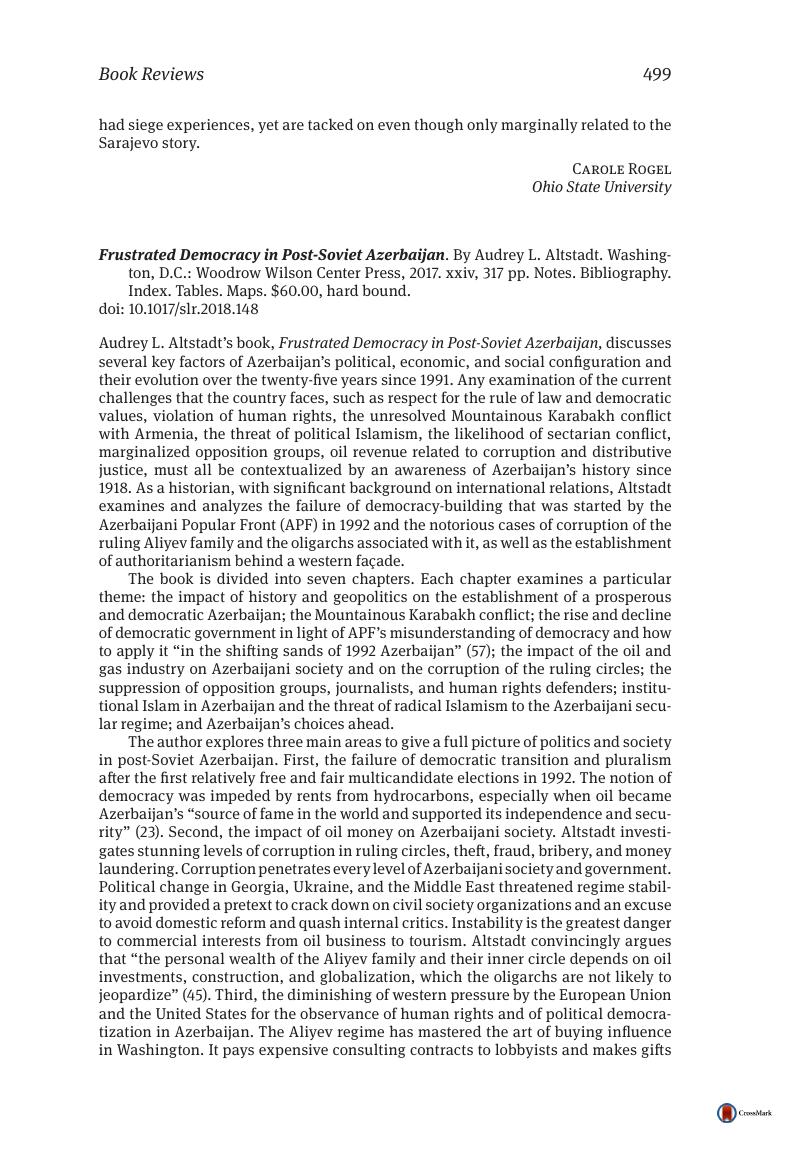No CrossRef data available.
Article contents
Frustrated Democracy in Post-Soviet Azerbaijan. By Audrey L. Altstadt. Washington, D.C.: Woodrow Wilson Center Press, 2017. xxiv, 317 pp. Notes. Bibliography. Index. Tables. Maps. $60.00, hard bound.
Published online by Cambridge University Press: 10 July 2018
Abstract
An abstract is not available for this content so a preview has been provided. Please use the Get access link above for information on how to access this content.

- Type
- Book Reviews
- Information
- Copyright
- Copyright © Association for Slavic, East European, and Eurasian Studies 2018


